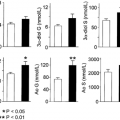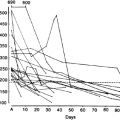DEFINITION AND COMPLICATIONS OF OBESITY
Part of “CHAPTER 126 – OBESITY“
DETERMINATION OF OBESITY
Obesity is an excess of body fat (adipose tissue), and ideally the diagnosis should be based on the direct demonstration of an excess amount of fat. Many sophisticated laboratory procedures have been applied to the direct measurement of body fat content in humans and experimental animals. These include underwater weighing to determine body density; compartmental analysis by measurement of the in vivo dilution of isotopes, such as tritiated or deuterated water4; and the determination of cytoplasmic mass from the number of naturally occurring isotopes, such as potassium-40, as counted in a total body liquid-scintillation apparatus.5 These methods are based on assumptions and equations that are not always valid across the spectrum of body weight. Newer techniques such as dual x-ray absorptiometry (DEXA) and computed tomography (CT) or magnetic resonance imaging (MRI) scanning are more accurate. The DEXA method passes two very low energy x-ray beams through a supine subject. The beams are differentially attenuated by lean body mass, body fat, and bone mineral density. Measurement of regional body fat distribution is most reliably determined by imaging the abdomen with CT or MRI, which can distinguish subcutaneous from visceral fat. For maximum accuracy, serial scans can be performed, but often, a single cut in the L4–L5 region is used. Total body electrical conductivity (TOBEC) is a method of evaluating fat content through changes in electromagnetic fields. Like the other methods, it is expensive, but involves no radiation and, thus, may be useful for evaluating children. Bioelectrical impedance is a less expensive method for assessing body composition, but measures are a complex function of electrolyte and water content, and are not accurate without careful standardization. Simpler measures, such as the determination of skinfold thickness (see Chap. 7) are appealing but are highly dependent on technique and require a number of assumptions to estimate body fat.
Stay updated, free articles. Join our Telegram channel

Full access? Get Clinical Tree





